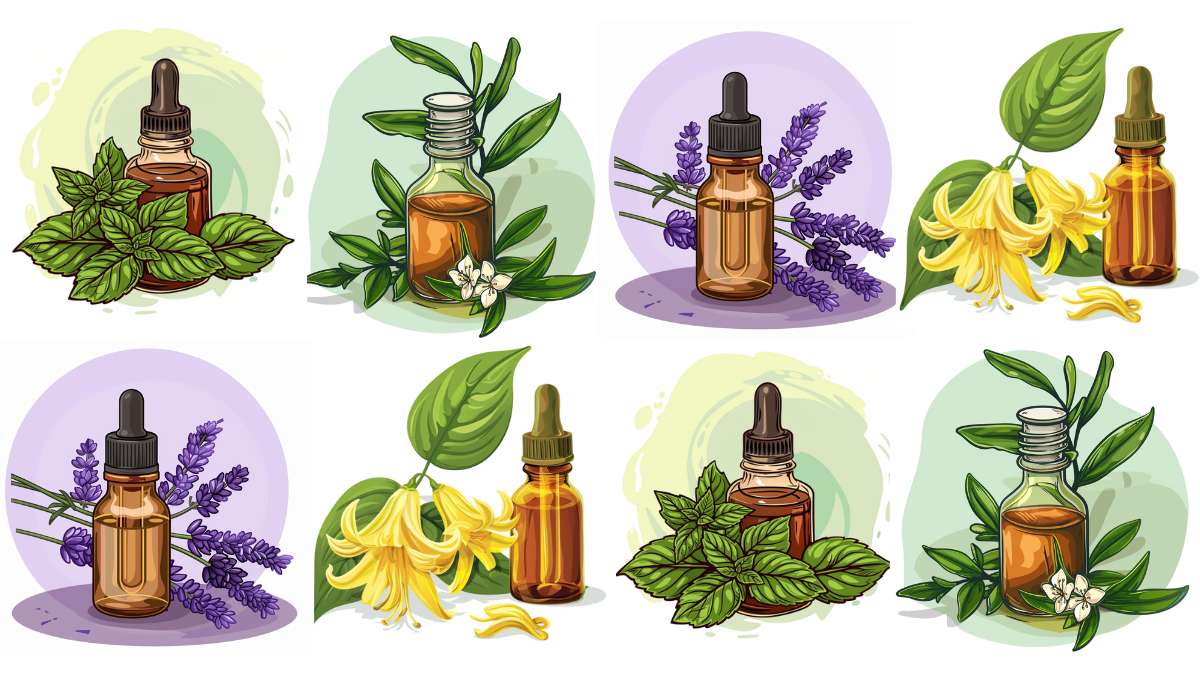Learn Which Essential Oils are the BEST for your DIY Deodorants
Ready to learn about the best essential oils for your DIY Deodorants?
I’m not sure if you prefer solid or spray. I personally prefer solid. It must be an age thing. I preferred the spray one when younger 🤷♀️.
Either way, below is my list of essential oils for a lovely DIY deodorant (yes, recipes below).
My criteria was that they be good at TACKLING BODY ODOUR. Because they do, you’ll love them.
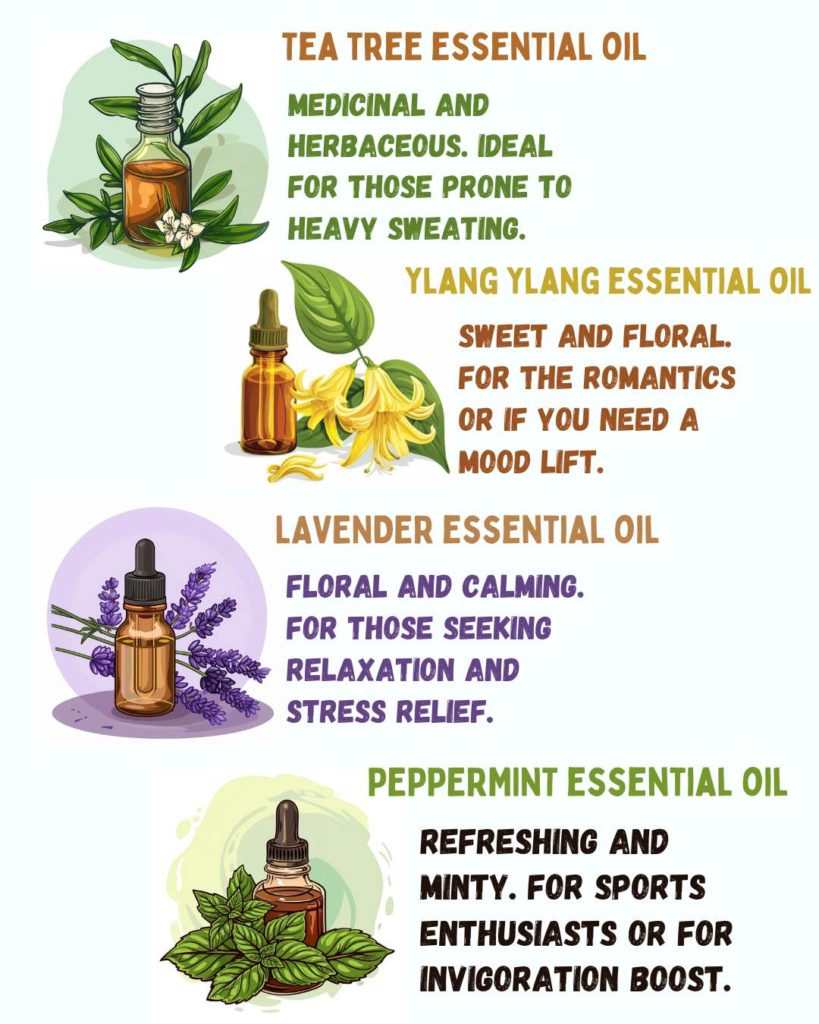
Also, below the list, I wrote two very simple DIY deodorant recipes. One for the solid version of a lovely DIY deo, one for the spray version.
Ok, let’s have a look at each one so you can take your pick (or pick them all).
I’ve placed affiliate links below, if you purchase they’re at NO extra cost to you. I try to find the cheapest vs best quality there is.
My Top 5 essential oils for body odour
1. TEA TREE
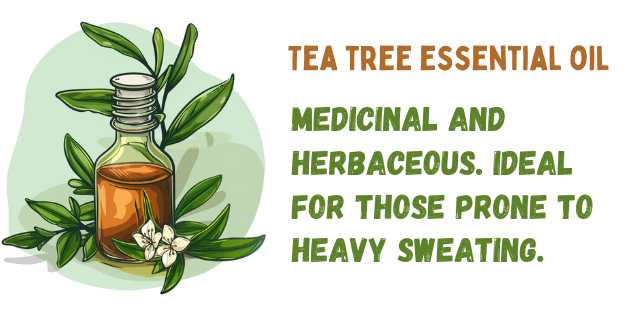
- Properties: Potent antibacterial effects against bacteria like S. hominis, S. epidermidis, and S. aureus.
- Scent: Medicinal and herbaceous (it is strong!).
- How much? Start with 5-6 drops in your deodorant recipe as per the amounts stated below. Its strong scent can overpower. Ideal for those who enjoy a clean, medicinal scent and need strong antibacterial action.
- Best for: Active people or those prone to heavy sweating.
2. SANDALWOOD
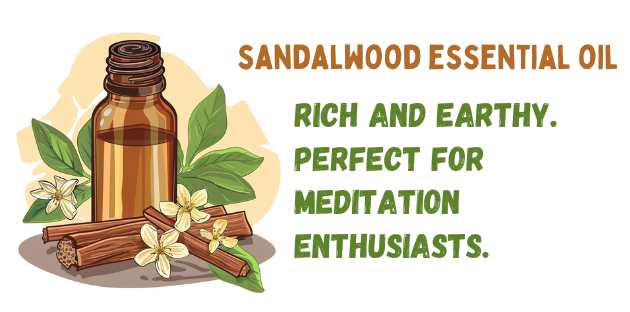
- Properties: Strong antibacterial activity; inhibits gram-positive bacteria.
- Scent: Rich, earthy.
- Usage Tips: Due to its potency (and sometimes price), 5 drops can be enough. Perfect for blends aiming for a long-lasting, grounding aroma. I personally love it.
- Best For: Someone looking for a luxurious scent profile and doesn’t mind investing in quality. Do you meditate? You might want the scent around you as you do then 🙂
3. YLANG-YLANG
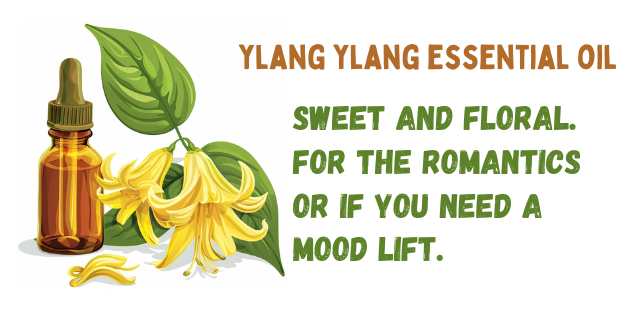
- Properties: Effective against odour-causing bacteria; antibacterial activities against Gram-positive bacteria, offers a potent, long-lasting fragrance. I love it.
- Scent: Sweet, floral, profound, uplifting.
- Usage Tips: Use sparingly; 5-7 drops should be enough due to its strong floral scent. It’s a mood enhancer, making it perfect for stress-related sweat control.
- Best For: People who appreciate floral scents. Also ideal for days that need a mood lift.
4. LAVENDER
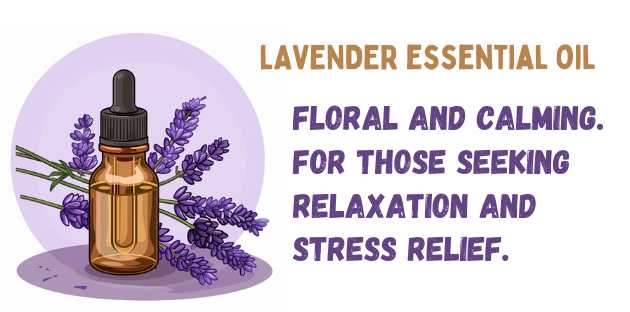
- Properties: Has strong antibacterial properties against various bacteria, including methicillin-resistant Staphylococcus aureus (MRSA). As you probably already know, it is popular for its potent floral fragrance and stress-relief benefits.
- Scent: Floral, calming.
- Usage Tips: 10-15 drops will give you a noticeable yet soothing aroma. Its versatility makes it suitable for almost any blend! I use it a lot in my recipes.
- Best For: Everyone, really. You would have to personally not like lavender in order not to use it. Great for people needing to relax throughout the day.
5. PEPPERMINT
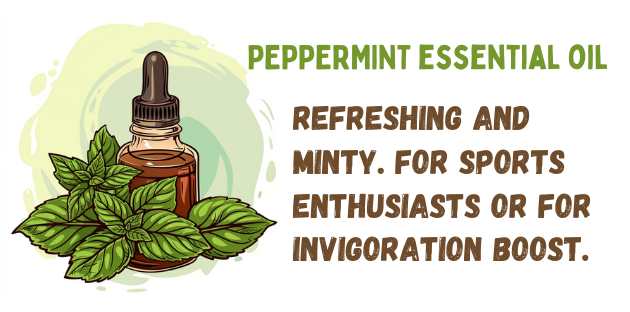
- Properties: Offers a cooling sensation; effective against various odour-causing bacteria. Exhibits antibacterial activity due to its main constituents like limonene, L-menthol, and methyl menthol
- Scent: Refreshing & minty!
- Usage Tips: 5-10 drops are usually enough. The cooling sensation is perfect for post-workout deodorants.
- Best For: Sports enthusiasts or anyone who needs an invigorating boost. Ideal for morning use to kickstart the day.
ALWAYS PATCH-TEST: To patch-test your DIY deodorant, simply apply a small amount to the inside of your wrist or elbow and wait 24 hours. If there’s no irritation or redness, you’re good to go; if there is, you might need to tweak your recipe.
Helpful to know:
1. Why not mix them?
Start with the deep notes (i.e. sandalwood), sprinkle in some heart notes (i.e. lavender), and top off with the zesty ones (i.e. peppermint). Yes, it’s like crafting your personal perfume (I will publish articles on making your own perfumes in the future). Just stick to the amount of drops I stated above and the overall final amount of drops stated below, and you’re good.
3. Match to mood
Your deodorant can be more than just functional. Picking oils that resonate with your lifestyle or mood (stressful day ahead? Lavender’s the essential oil to go for) adds a personal touch that’s uniquely you. You get the idea.
4. Avoiding them altogether?
Not everyone loves them. Or perhaps you’re not in the mood for scents. I sometimes get tired of them. You might want to simply make the recipes below and forget the essential oils. Yes, you’ll still have an AMAZING product in your hands.
Time for your recipes…
Solid deodorant? Here you go.
You’ll need:
- 30 ml/2 tablespoons coconut oil
- 30 ml/2 tablespoons baking soda (or substitute with arrowroot powder for sensitive skin)
- 30 ml/2 tablespoons shea butter
- 30 drops of essential oils (choose from the list above based on your preferences)
You’ll end up with around 90ml / 3oz of product. It will last you for months.
Making it:
- Melt shea butter and coconut oil together (double boiler or use a wax warmer, here’s one very similar to the one I’ve been using for years!).
- Mix in baking soda (or arrowroot powder) to form a thick paste.
- As it starts cooling down, add the essential oils
- Pour into your containers. These 4 oz glass ones will do the job.
- You’ll want a scooper. These mini ones will do the job, when I find bamboo ones (or at least non-plastic) I will change the link ASAP.
Do you prefer it in spray form?
You’ll need:
- 2 ounce witch hazel (beware, my chosen witch hazel does have 14% alcohol which works as the preservative, I prefer it to any other preservative but make sure you’re not sensitive to alcohol).
- OPTIONAL: 1 teaspoon baking soda (NOT if you have sensitive skin).
- 15-20 drops of essential oils (as per your choice from my list above)
Therefore, with this recipe, you’ll end up with around 2 fl oz (59 ml) of final deodorant product.
Making it:
- Combine all ingredients in a spray bottle. These glass spray bottles are the perfect size for the amount above.
- Shake well before each use.
Questions? Leave your comments below.
I’m done 💖

